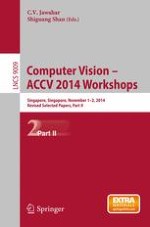2015 | OriginalPaper | Buchkapitel
A Non-invasive Facial Visual-Infrared Stereo Vision Based Measurement as an Alternative for Physiological Measurement
verfasst von : Mohd Norzali Haji Mohd, Masayuki Kashima, Kiminori Sato, Mutsumi Watanabe
Erschienen in: Computer Vision - ACCV 2014 Workshops
Aktivieren Sie unsere intelligente Suche, um passende Fachinhalte oder Patente zu finden.
Wählen Sie Textabschnitte aus um mit Künstlicher Intelligenz passenden Patente zu finden. powered by
Markieren Sie Textabschnitte, um KI-gestützt weitere passende Inhalte zu finden. powered by
